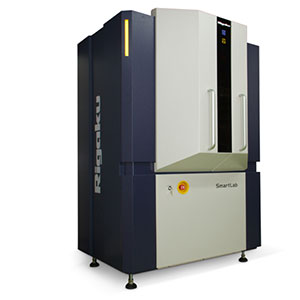MENUMENU
X-ray diffraction (XRD) is an analysis technique for determining the crystalline and atomic structures of sample materials, An x-ray diffractometer is the instrument used to carry out this technique.

XRD is effective for materials that are either wholly or partially crystalline. It is a powerful and rapid means of analysis.
There are several essential qualities you should look for in an x-ray diffractometer:
Because x-rays are a form of electromagnetic radiation, they include wavelengths that you can measure in nanometres. When x-rays scatter from a substance with a micro-structure, they cause interference, which causes patterns to occur.
The x-ray scattering process, when applied to crystalline materials, creates three-dimensional patterns whose shape is determined by the interference pattern resulting from varying path lengths determined by the d spacing of the crystal structures being examined.
To make this happen, you must first generate x-rays using either a conventional x-ray tube or rotating anode system, the sample is then placed in the x-ray beam.
Once this occurs, you collect the diffracted x-rays, which, in effect, enable you to read the structure of the sample.
It is like looking at a fingerprint, because each crystalline structure has a unique set of d-spacings. These are the distances between planes of atoms. The spaces cause diffraction peaks.
Because there are standard d-spacing reference patterns to compare the results to, you can use the x-ray diffractometer to identify the sample substance’s structure.
You can use an x-ray diffractometer to determine the orientation of the individual grains of a crystal.
It can help identify crystal structures in unknown substances.
It will measure the internal stress, the size and the shape of small crystalline areas, and measure the average spacings between the layers of rows of atoms in a sample material.
It is a form of phase identification, determining the minerology of samples.
There are three essential components that an x-ray diffractometer has:
The x-ray tube includes a filament and a target. Passing a current through the filament results in the emission of electrons. Due to the large potential difference (40-60 thousand volts) between the Filament and the Target, these electrons are accelerated towards the target with very high energy.
The electrons bombard the target material, dislodging its inner electron shells, which produces x-rays (along with other parts of the EM spectrum)
The sample material is them place in the centre of the circle equidistant from the source and the detector. Both the source and detector rotate around the sample – the detector collects the diffracted x-rays. The angle between the detector and source at each measurement point determines 2-theta angle of that diffraction. Knowing the 2-theta angle and the wavelength of the x-ray source allows you to calculate the d spacing via Bragg’s law:
n λ = 2d sinΘ
where n (an integer) is the “order” of reflection, λ is the wavelength of the incident X-rays, d is the interplanar spacing of the crystal and Θ is the angle of incidence.
Beyond their basic components, x-ray diffractometers come in a range of different models, incorporating various features and sample attachments.
Rigaku manufactures leading-edge x-ray analysis instruments, from compact mini-systems to high resolution XRD devices.
Here, we look at the key features of models in the Rigaku range.

Miniflex is a benchtop diffractometer that is ideal for qualitative or quantitative analysis.
There is a choice of either a 600 watt or 300 watt x-ray tube, and the device is fitted with a high-speed silicon strip detector.
It has an eight-position sample changer, and it also comes with the option of a 2D detector.
As a multipurpose analytical instrument it is fast, accurate, easy to use, and comes in a convenient, compact design.

The Rigaku SmartLab XRD instrument is a high resolution diffractometer.
It offers superior performance, with the option of a PhotonMax 9kW rotating anode x-ray source.
It twins this high-intensity source with a high resolution 2D multidimensional detector, designed to provide excellent results for all applications.
And you do not need to change detectors for different experiments because the SmartLab is capable of 0D/1D and 2D measurements when fitted with the 2D multidimensional detector.
Along with this superior performance, the SmartLab is exceptionally user-friendly, with built-in user guidance features and fully automated alignment between sample and hardware.

This is Rigaku’s mid-range, multipurpose SmartLab model that combines cost-effectiveness with versatility.
Offering improved performance at a lower cost, it has a high-speed detector, a 3KW sealed tube x-ray generator, a semiconductor detector as standard, and a 2D multidimensional detector as an option again allowing for 0D, 1D and 2D data collection
With a SmartLab system, when you add the SmartLab Studio II, you have a complete measurement and data processing package.

The SmartSite RS is a portable x-ray stress analyser, for easy, rapid data collection.
It uses a 2D semiconductor and a single-exposure method to deliver highly accelerated data acquisition in around 60 seconds.
You can control it by a tablet or other device via wifi, and it has a built-in battery option.
This is the perfect, portable solution for rapid x-ray analysis.
For more information about x-ray diffractometers, please telephone +44 (0) 161 442 9963, email enquiries@scimed.co.uk or complete our online enquiry form.